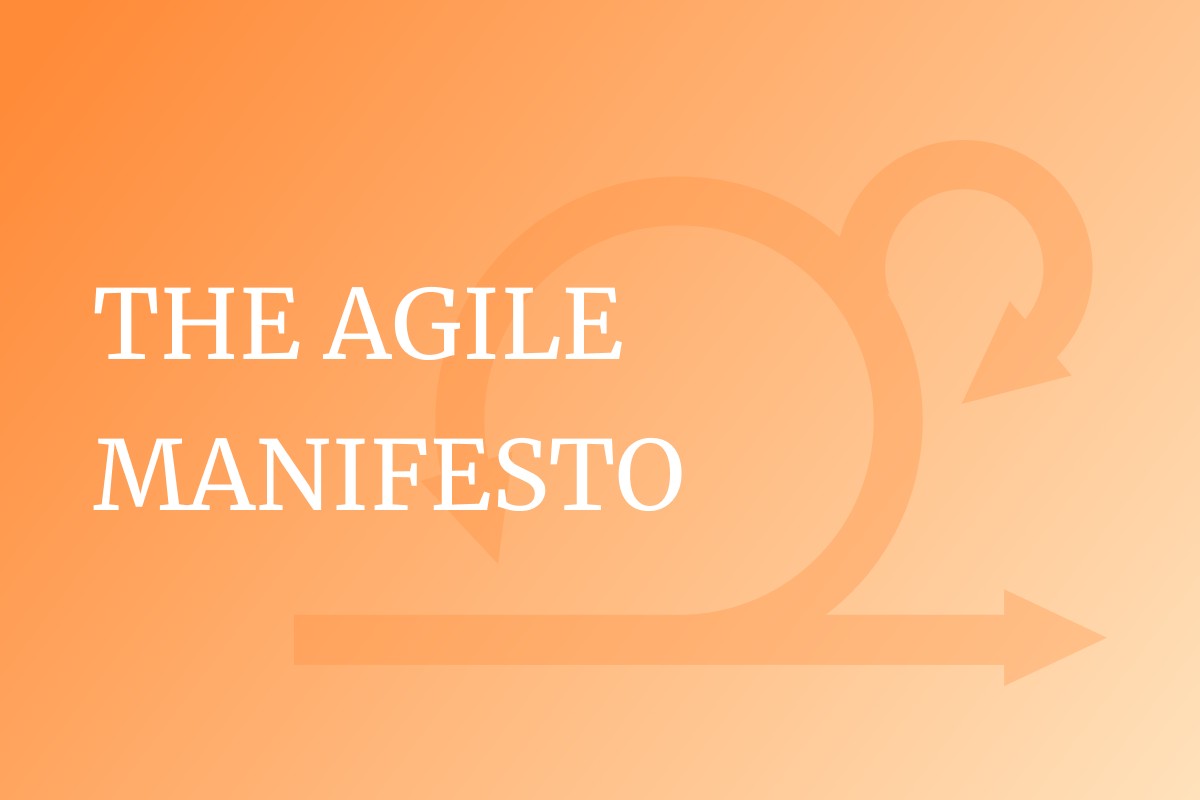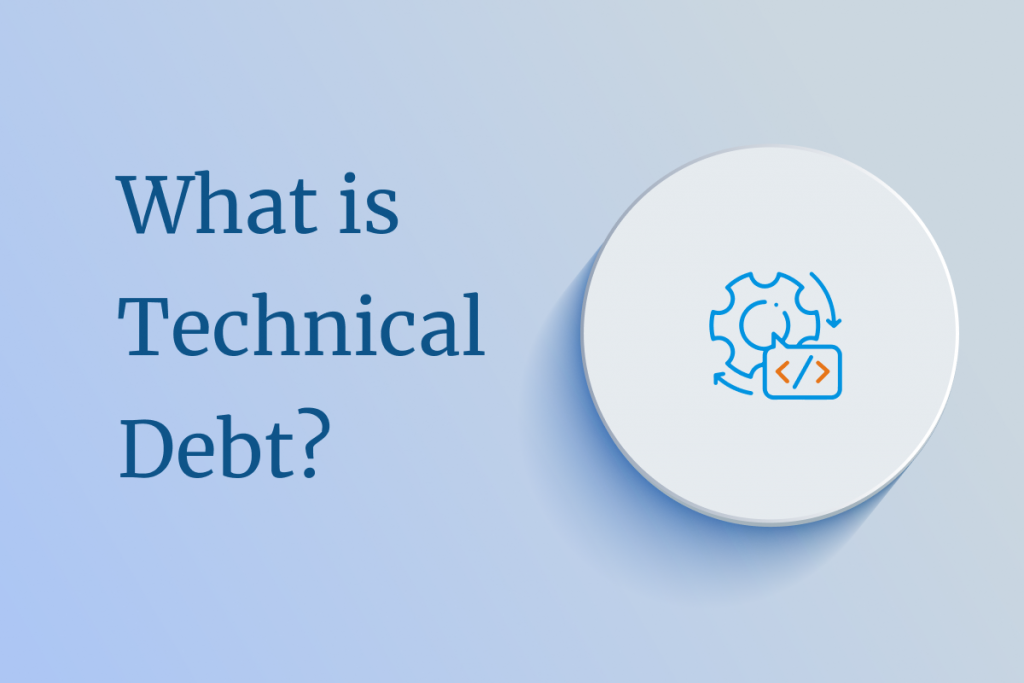Today’s quickly evolving software ecosystem may prove too much for traditional development methods to keep up with. An excellent alternative that prioritizes teamwork, adaptability, and customer value delivery is the Agile Manifesto.
This blog post will outline the core concepts and tenets of the Agile Manifesto and discuss how they might change your approach to developing software.
What is the Agile Manifesto?
Developed by 17 software practitioners and published in 2001, the Agile Manifesto is a founding statement in agile software development. It presents 12 principles and 04 essential values, demonstrating a more flexible and human-centered approach to software development.
The following is a suggestion rather than a set of guidelines to assist software development teams, whether developing custom software or not, in focusing on delivering value to customers through collaboration and continuous improvement.
Authors of the Agile Manifesto
The Agile Manifesto originated from a meeting of 17 software professionals in Utah in February 2001. This group sought an alternative to the labor-intensive, traditional software development processes because it was unhappy with their limits. It later changed its name to the Agile Alliance.
Their talks at the Snowbird ski resort produced the foundational document, the Agile Manifesto, which lists essential values and ideas.
The Agile Manifesto wasn’t entirely new. Many of the ideas had been bubbling up in the software development world for years. However, the Manifesto’s significance lies in its ability to crystalize and present these ideas as a cohesive framework.
The 17 software practitioners who authored the Agile Manifesto include:
- Kent Beck: Co-created Extreme Programming (XP), a popular agile methodology
- Mike Beedle: Co-authored the book Agile Software Development with Scrum
- Arie van Bennekum: Owner of Integrated Agile
- Alistair Cockburn: IT strategist and creator of the Crystal Agile Methodology
- Ward Cunningham: Invented the wiki concept and first coined the term “technical debt.”
- Martin Fowler: Software practitioner, writer, and speaker
- Robert C. Martin: Also known as “Uncle Bob,” consultant on clean coding practices
- Steve Mellor: Computer scientist who co-invented Object-Oriented System Analysis (OOSA)
- Dave Thomas: Programmer and co-authored the book The Pragmatic Programmer
- James Grenning: Author of the book Test-Driven Development
- Jim Highsmith: Creator of Adaptive Software Development (ASD)
- Andrew Hunt: Co-authored the book The Pragmatic Programmer
- Ron Jeffries: Co-created Extreme Programming (XP)
- Jon Kern: Consultant who helps organizations with agile practices today
- Brian Marick: Computer scientist and author of several books on programming
- Ken Schwaber: Co-created Scrum with Jeff Sutherland
- Jeff Sutherland: Co-created Scrum with Ken Schwaber
The Agile Manifesto for Software Engineering
The Agile Manifesto provides the groundwork for flexible software development, outlining 04 core values and 12 principles.
The 4 Agile Values
There are four core values in total, which serve as a guide for a more adaptable and iterative software engineering process.
Individuals and interactions over processes and tools
This value emphasizes how well the development team members can work together and communicate. The manifesto highlights the importance of successful teamwork among talented and driven individuals, even when procedures and resources may be beneficial.
Working software over comprehensive documentation
The Agile Manifesto states that having a working product with functional components is more important than having a large amount of documentation up front. This makes faster data entry and the flexibility to make changes based on actual usage possible.
Customer collaboration over contract negotiation
This concept emphasizes the crucial importance of constant communication with the client throughout the development process. Agile approaches promote flexibility and open communication instead of concentrating on inflexible contracts that might not take shifting priorities or demands into account.
Responding to change by following a plan
Since the software development industry is dynamic, requirements can change. The Agile Manifesto strongly emphasizes the value of flexibility and responsiveness to change over strict adherence to a predetermined plan. This enables groups to welcome fresh perspectives and change course as necessary to produce the greatest end result.
The 12 Agile Principles
The Agile Manifesto is not limited to its fundamental principles. It goes a step further and provides agile development approaches with 12 guiding principles. These principles encourage consistency in technical quality assurance, frequent software delivery with functional features, early and continuous release cycles that prioritize customer requests, and more.
Our highest priority is to satisfy the customer through early and continuous delivery of valuable software.
The Agile Manifesto is built around this fundamental idea. It draws attention to the fact that software development is now more customer-centric than product-centric. Agile development puts the user’s demands first by producing valuable software often. This guarantees that the product meets the user’s needs and permits ongoing modification in response to criticism.
Welcome changing requirements, even late in development. Agile processes harness change for the customer’s competitive advantage.
The Agile Manifesto emphasizes the value of accepting change, which contradicts the conventional understanding of requirements in software development. Teams can create a better product that gives the client a competitive edge by being flexible and adding new features or attending to developing needs. Quick feedback loops and continuous learning make this possible, allowing teams to identify and prioritize important improvements more quickly.
Deliver working software frequently, from a couple of weeks to a couple of months, with a preference for the shorter timescale.
The third Agile principle emphasizes the necessity of providing consumers with functional software as soon as feasible through shorter development cycles known as sprints. This makes early feedback and continual improvement possible, resulting in a product that better satisfies customer needs.
Business people and developers must work together daily throughout the project.
The fourth Agile principle highlights the significance of strong communication between business and development teams to guarantee that the product satisfies business needs. Daily engagement and continuous contact are necessary for the duration of the project.
Build projects around motivated individuals. Give them the environment and support they need, and trust them to get the job done.
This concept highlights how important human capital is to any endeavor’s success. Agile teams will succeed in their projects if they focus on highly motivated individuals, provide them with the resources they require, and have faith in their capacity to deliver results.
The most efficient and effective method of conveying information to and within a development team is face-to-face conversation.
This principle emphasizes the importance of open communication for Agile project managers. In-person contacts guarantee mutual understanding, which encourages clear communication and dispels misunderstandings.
Working software is the primary measure of progress.
According to the theory, regular software releases are required to guarantee development progress and gather pertinent feedback.
Agile processes promote sustainable development. The sponsors, developers, and users should be able to maintain a constant pace indefinitely.
The objective is to concentrate on long-term sustainability in development by promoting stakeholder involvement, maintaining a steady pace through iterative planning and delivery, and prioritizing open communication to avoid fatigue and ensure constant quality.
Continuous attention to technical excellence and good design enhances agility.
To ensure efficient development and long-term sustainability, the principle promotes an emphasis on technical quality and well-designed software within Agile approaches. It also strongly emphasizes user experience, simplicity, maintainability, and the preference for functional software over copious documentation.
Simplicity—the art of maximizing the amount of work not done—is essential.
The Agile techniques philosophy states that in order to maximize value delivery to clients and foster effective development, it is imperative to prioritize and focus on the most critical tasks. Clarity, simplicity, and an emphasis on the user experience are often used to replace too complex content or documentation.
The best architectures, requirements, and designs emerge from self-organizing teams.
The principle advocates for empowering development teams with autonomy to make technical decisions and manage their work. It emphasizes a self-organizing approach rather than top-down micromanagement to foster innovation, ownership, and higher-quality outcomes.
At regular intervals, the team reflects on how to become more effective, then tunes and adjusts its behavior accordingly.
Agile development teams prioritize continuous improvement through regular reflection and adaptation. By experimenting with new concepts and learning from past errors, teams may continuously improve their practices and routines, eventually raising productivity and effectiveness.
Benefits of the Agile Manifesto
- Increased flexibility: Agile approaches are designed to be adaptable. Short cycle times enable timely change and continuous feedback, suggesting that projects may adapt to shifting needs or priorities far more easily than with previous methods.
- Better products: Agile strongly emphasizes continuous, iterative improvement. By regularly testing and developing the product in short cycles, teams are able to identify and address issues early on, leading to a higher-quality overall product.
- Increased client satisfaction: Agile approaches typically call for tight client collaboration throughout the development process. This guarantees that the final product satisfies their requirements and expectations, which will please customers.
- Lower risk: Agile’s iterative methodology breaks down big projects into smaller, easier-to-manage chunks. This allows for early identification and mitigation of dangers, lowering project risk overall.
- Enhanced team morale: Agile encourages self-organizing teams, building a culture of cooperation and transparent communication. As a result, the team’s spirit and project ownership may rise.
Challenges of the Agile Manifesto
- Expanding massive projects: The Agile Manifesto was originally designed for small teams. Scaling up complex initiatives with several stakeholders may be difficult. Larger projects may require more organization and planning than Agile’s flexible methodology can provide.
- Lack of proactive preparation: Agile prioritizes flexibility over following a set strategy. This is useful, but some projects—especially those with tight deadlines or dependencies—might benefit more from having a clear strategy.
- Buy-in from management: The management team is necessary for an Agile transformation to be effective. Managers accustomed to old, hierarchical methods may find it difficult to adjust to the more empowered and collaborative environment that Agile promotes.
- Gaps in the documentation: Agile places more emphasis on usable software than thorough documentation. Even though a lot of paperwork can be inefficient, some documentation is always necessary, particularly for complex projects involving larger teams. Achieving the ideal balance can be difficult.
- Culture and teamwork: Strong teamwork, communication, and self-organization are essential for agile success. It might be challenging to apply Agile successfully if a team lacks these abilities or if the corporate culture is resistant to change.
Real-World Examples
Entire legal departments of the biggest music streaming organizations have found common ground with the principles of the Agile Manifesto. A customer-centric, iterative strategy has been the driving force behind success and innovation for the following businesses:
Spotify: Embracing Change in the Music Streaming Industry
A constantly shifting market is the home of the well-known music streaming service Spotify. As technology advances and user needs change, they embrace an Agile methodology. In short, “sprints,” their development teams focus on specific features and functionalities. In addition to allowing for continuous user feedback, this keeps the platform current and intuitive.
Netflix: Recommendation Engine Improvement
Netflix’s recommendation engine is evidence of its Agile methodology. It is divided into features that undergo a short development cycle, such as actor recommendations or genre. Users can compare recommendation systems and iterate quickly with A/B testing. This cycle of testing, improvement, and deployment ensures that users are kept interested in the continually growing recommendation system.
Boa Vista: A Financial Services Success Story
Brazilian financial solutions firm Boa Vista used agile approaches to enhance its software development process. This change gave its staff members greater ability to respond quickly to changing client needs and market conditions. Boa Vista used iterative methods and a continuous improvement emphasis to deliver high-quality solutions more quickly.
Key Takeaway
Rather than being a rigid collection of rules, the Agile Manifesto provides a guide for prioritizing people and collaboration over procedures and tools. It emphasizes being adaptable and values functional software over documentation that is too long. Knowing these core concepts can help you design a software engineering process that is more responsive and adaptive, and it can also encourage a continuous cycle of learning and improvement.
ContactContact
Stay in touch with Us




